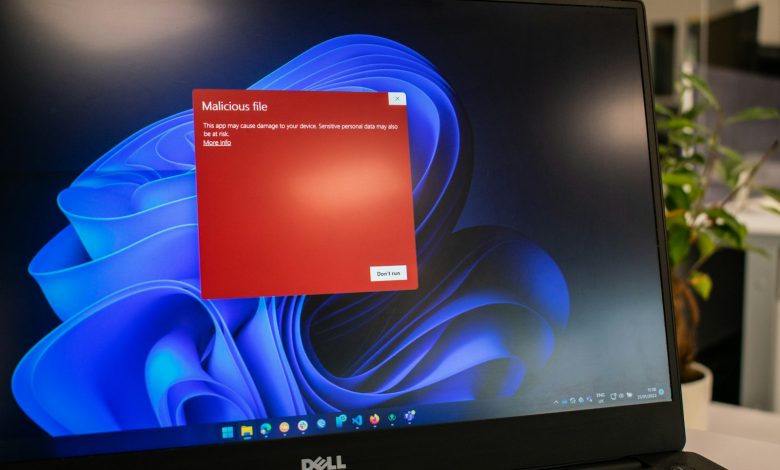
Table of Contents
Introduction: Understanding the Threat in 2024
In recent years, digital transformation has surged, intertwining our professional and personal lives with the online world more than ever before. As our reliance on digital technologies grows, so does the sophistication and frequency of cyberattacks, posing significant risks to individuals and businesses alike. Among these cyber threats, ransomware stands out for its devastating impact. The year 2024 promises further evolution in the ransomware landscape, underscoring the necessity of understanding and preparing against these digital extortion schemes.
What is Ransomware? A Brief Overview
Ransomware is a form of malicious software that encrypts files on a victim's computer or network, rendering them inaccessible until a ransom is paid to the attacker. Typically delivered through deceptive links in emails or compromised websites, this malware exploits vulnerabilities in security systems to seize critical data. By encrypting files with complex algorithms, cybercriminals hold data hostage, demanding payment for decryption keys. The impact of these attacks can be crippling, accounting for significant financial losses and damage to organizational reputation.
Evolution of Ransomware Threats in 2024: What’s New?
The landscape of ransomware threats in 2024 represents a significant evolution from its early iterations. With the rise of technologies such as artificial intelligence (AI) and machine learning, ransomware attacks have become more sophisticated, making them harder to predict and counteract. The emergence of Ransomware as a Service (RaaS) models offers a low barrier to entry for cybercriminals, democratizing the tools needed to launch attacks. This convenience has led to a proliferation of threat actors, each targeting vulnerabilities across myriad digital infrastructures.
Notable groups like MalasLocker, 8BASE, and Akira have risen to prominence, employing advanced tactics that bypass traditional cybersecurity measures. Moreover, the integration of AI in ransomware software has enabled more targeted and adaptive attacks, leveraging data analysis to identify and exploit system weaknesses with unprecedented precision.
The year 2024 has also witnessed a disturbing trend of 'double-dipping,' where attackers not only encrypt but also exfiltrate sensitive data, threatening to release it publicly unless an additional ransom is paid. This two-pronged assault amplifies the potential damage of ransomware incidents, complicating recovery efforts and raising stakes for victims.
In response to the evolving threat, awareness and preparedness among businesses have become critical. A shift toward more robust cybersecurity frameworks, including comprehensive incident response plans and regular security audits, marks a proactive approach to mitigating ransomware risks. Organizations are increasingly adopting advanced endpoint protection solutions, employing cybersecurity experts, and fostering a culture of security awareness among employees to fortify their defenses against ransomware attacks.
As ransomware continues to advance, the collective efforts of individuals, businesses, and governments will be paramount in combatting this pervasive threat. Understanding the nature and trajectory of ransomware in 2024 is a crucial step towards developing more effective strategies to protect digital assets and maintain the integrity of our online world.
Detecting Ransomware in 2024
As ransomware continues to evolve, detecting an infection early can significantly mitigate its impact. In 2024, this involves being vigilant for signs of infection and employing advanced detection tools. With cybercriminals constantly innovating, adapting your detection strategies is crucial for staying one step ahead.
Early Signs of a Ransomware Infection
Understanding the early signs of a ransomware attack can be the key to preventing widespread damage. Such signs often include:
- Unusually slow system performance, as resources are diverted to encrypt files.
- Inability to access certain files, with error messages indicating they are corrupted or encrypted.
- Sudden appearance of unfamiliar files or apps running in the background.
- Unexpected changes to file extensions, often featuring new, unrecognizable ones that indicate encryption.
- Ransom notes appearing on the desktop or within affected directories, demanding payment for decryption keys.
- Increased network activity, possibly signaling data exfiltration or communication with the attacker’s command and control servers.
Recognizing these signs promptly and responding can dramatically reduce the ransomware’s impact.
Top Ransomware Detection Tools of 2024
In response to the sophisticated threats of 2024, a new generation of ransomware detection tools has emerged. These tools leverage advanced technologies such as artificial intelligence (AI) and machine learning to identify and neutralize threats before they can cause significant harm. Notable among these tools are:
- AI-driven Threat Detection Systems: These systems analyze patterns and anomalies in system behavior to detect ransomware activities early.
- Endpoint Detection and Response (EDR) Solutions: EDR tools provide comprehensive monitoring and response capabilities across endpoints, offering real-time threat detection and mitigation.
- Behavioral Analysis Tools: By monitoring and learning the normal behaviors of a network and its users, these tools can quickly identify deviations that may indicate a ransomware attack.
- Decryption Tools: While not prevention tools per se, an array of specialized decryption tools can assist in recovering from certain ransomware infections without paying the ransom.
With the right tools in place, organizations can significantly enhance their resilience against ransomware attacks.
Implementing Effective Security Measures to Prevent Infections
To protect against ransomware in 2024, organizations must adopt a multi-layered security approach that includes both technological solutions and user education. Key strategies include:
- Regular Software Updates: Keeping all software up to date, especially security software, to protect against known vulnerabilities.
- Comprehensive Backup Strategy: Implementing regular backups of critical data, stored offline or in a protected cloud service, to facilitate recovery in case of an attack.
- Employee Training: Educating employees on the importance of cybersecurity, including recognizing phishing attempts and unsafe websites.
- Restricting Access: Implementing the principle of least privilege, ensuring users have access only to the data and resources necessary for their roles.
- Use of Advanced Security Tools: Employing the latest in endpoint protection, intrusion detection systems, and secure gateways to create a robust defense against ransomware.
By integrating these measures into their cybersecurity programs, organizations can build a strong defense that not only detects but also significantly hampers the effectiveness of ransomware attacks.
Steps to Remove Ransomware Safely
Removing ransomware requires a careful and methodical approach to ensure that the malware is completely eradicated without causing further damage to the infected systems. The steps outlined below represent the best practices for safely dealing with a ransomware infection in 2024, leveraging the latest in cybersecurity technology and strategies.
Initial Response: What to Do Immediately After Detection
The moments following the detection of ransomware are crucial. Swift and decisive action can significantly limit the malware's impact. The recommended initial response includes:
- Isolation of Affected Systems: Immediately disconnect the infected device(s) from the network to prevent the ransomware from spreading to other systems and devices.
- Identification of the Ransomware Variant: Use tools like ID Ransomware to identify the specific variant of ransomware. This can provide valuable information on whether decryption tools are available and the best approach for removal.
- Securing a Sample of the Malware: Safely collect a sample of the malware if possible. This can be useful for further analysis or for reporting the incident to cybersecurity authorities.
- Reporting the Incident: Report the ransomware attack to the relevant cybersecurity authorities in your country. They can provide further guidance and assistance.
After these initial steps, you can proceed to the removal and recovery phase with a clearer understanding of the specific threat you're facing.
Ransomware Removal Tools and Techniques in 2024
In 2024, a variety of sophisticated tools and techniques have been developed to assist in the removal of ransomware without succumbing to the demands of cybercriminals. These include:
- Antivirus and Anti-Malware Software: Utilize up-to-date antivirus and anti-malware programs to scan the infected systems. These tools can often detect and remove ransomware files.
- Decryption Tools: For certain ransomware variants, decryption tools may be available that can unlock files without paying the ransom. Websites like No More Ransom provide a repository of these tools.
- System Restore: If available, system restore points can revert your system to a state before the ransomware infection occurred, potentially removing the malware.
- Manual Removal: In some cases, particularly with less sophisticated ransomware, manual removal may be possible. This typically involves booting the system in safe mode and manually deleting the malicious files. However, this should only be attempted by users with technical expertise.
After successfully removing the ransomware, it's essential to restore affected files from backups. Ensure that all data is verified and clean before reconnecting the recovered system to the network. Finally, conduct a thorough review of cybersecurity practices and enhance defenses to prevent future infections.
Beyond the acute response, ongoing vigilance and adherence to cybersecurity best practices form the cornerstone of defense against the ever-evolving ransomware threat landscape.
Recovering from a Ransomware Attack
Ransomware attacks can leave victims feeling helpless and desperate. However, recovery is often possible by following a structured approach and employing effective strategies for data recovery. While the immediate aftermath of an attack can be chaotic, having a clear recovery plan can greatly mitigate the negative impacts of ransomware.
Best Practices for Data Recovery and Backups
The recovery process following a ransomware attack hinges on the presence and quality of data backups. These best practices are designed to optimize the recovery process:
- Regularly Update and Test Backups: Ensure backups are performed regularly and test them periodically to confirm data integrity and functionality.
- Use Offline and Cloud-based Backups: Maintain offline backups to protect against ransomware that targets connected network drives. Cloud-based backups should be encrypted and protected with strong passwords and multi-factor authentication.
- Data Recovery Process: Begin the data recovery process by first ensuring that the ransomware has been completely removed from your system to prevent re-encryption of restored data. Restore data from the cleanest, most recent backup available.
- Seek Professional Help if Needed: If your organization lacks the expertise to safely recover data, consider seeking help from professionals specializing in ransomware recovery. They can offer specialized tools and experience that can significantly improve recovery outcomes.
Having a comprehensive backup strategy in place is the best defense against data loss due to ransomware. It not only facilitates recovery but also minimizes the temptation to pay ransoms—a practice that encourages further attacks.
Preventing Future Ransomware Attacks: Strategies and Tools
Beyond recovering from a current attack, it’s essential to fortify your systems against future threats. Implementing rigorous cybersecurity measures can significantly reduce the risk of falling victim to ransomware again. Consider the following strategies and tools:
- Endpoint Protection: Use advanced endpoint security solutions that offer real-time protection against malware, including ransomware. Ensure that all endpoint security solutions are regularly updated.
- Security Awareness Training: Train your staff regularly on cybersecurity best practices, such as how to recognize phishing emails, the importance of password security, and safe web browsing habits.
- Access Control and Network Segmentation: Limit user permissions to only the essential access needed for their roles, and segment your network to contain and limit the spread of infections.
- Vulnerability Management: Implement a robust vulnerability management program that includes regular scanning, patching of software and hardware vulnerabilities, and penetration testing.
- Email Security Solutions: Deploy advanced email security solutions that can filter out phishing emails, malicious attachments, and links, which are common ransomware delivery mechanisms.
While it’s impossible to eliminate all risk of ransomware, adopting a proactive and layered security approach can greatly reduce the likelihood and impact of future attacks. Prioritizing cybersecurity as a continuous process, rather than a set-it-and-forget-it solution, is key to staying ahead of evolving ransomware threats.
Staying One Step Ahead of Ransomware Threats
In the ever-evolving digital landscape of 2024, ransomware remains a significant threat to both individual users and organizations. The sophistication of ransomware attacks has increased, with cybercriminals leveraging advanced technologies and adapting their strategies to bypass security measures. However, our awareness and preparedness have also evolved, offering hope in the fight against this pervasive cyber threat.
The battle against ransomware is not one that can be won by a single entity or through a one-time effort. It requires ongoing vigilance, advanced cybersecurity practices, and a collective effort from individuals, organizations, and governments worldwide. By understanding the nature of ransomware, staying informed about the latest detection and prevention techniques, and implementing a multi-layered security approach, we can significantly reduce our vulnerability to these attacks.
Recovery from ransomware does not solely depend on the tools and technologies at our disposal but also on our readiness to respond swiftly and effectively to an attack. The importance of regular, secure backups cannot be overstressed, as they remain the most reliable method for restoring encrypted data without yielding to the demands of cybercriminals.




